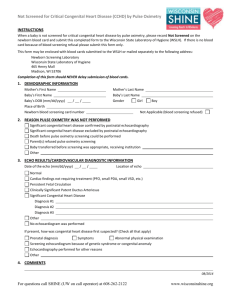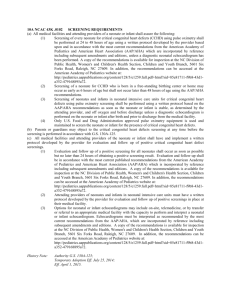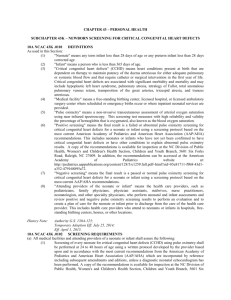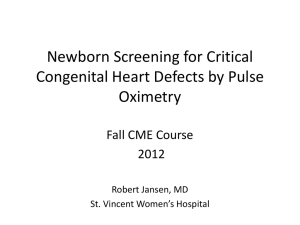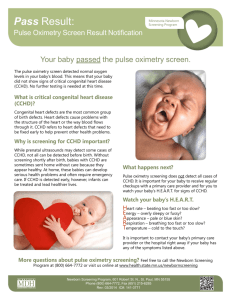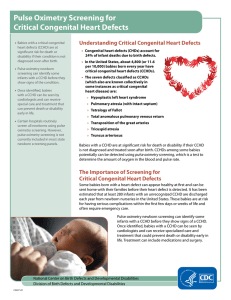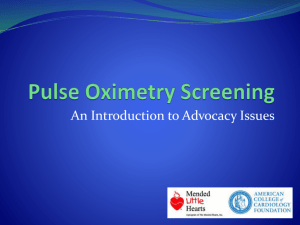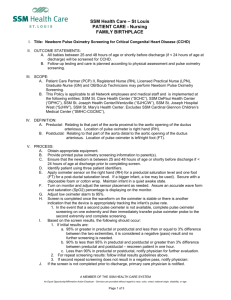CHAPTER 43 – PERSONAL HEALTH subchapter 43K – newborn
advertisement
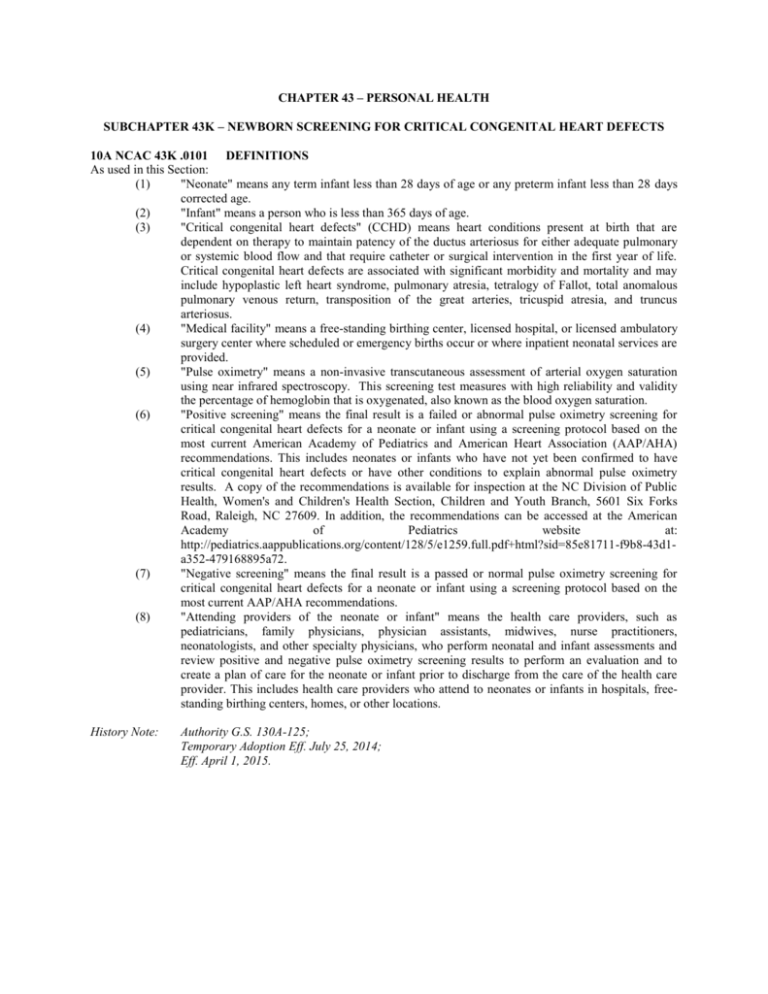
CHAPTER 43 – PERSONAL HEALTH SUBCHAPTER 43K – NEWBORN SCREENING FOR CRITICAL CONGENITAL HEART DEFECTS 10A NCAC 43K .0101 DEFINITIONS As used in this Section: (1) "Neonate" means any term infant less than 28 days of age or any preterm infant less than 28 days corrected age. (2) "Infant" means a person who is less than 365 days of age. (3) "Critical congenital heart defects" (CCHD) means heart conditions present at birth that are dependent on therapy to maintain patency of the ductus arteriosus for either adequate pulmonary or systemic blood flow and that require catheter or surgical intervention in the first year of life. Critical congenital heart defects are associated with significant morbidity and mortality and may include hypoplastic left heart syndrome, pulmonary atresia, tetralogy of Fallot, total anomalous pulmonary venous return, transposition of the great arteries, tricuspid atresia, and truncus arteriosus. (4) "Medical facility" means a free-standing birthing center, licensed hospital, or licensed ambulatory surgery center where scheduled or emergency births occur or where inpatient neonatal services are provided. (5) "Pulse oximetry" means a non-invasive transcutaneous assessment of arterial oxygen saturation using near infrared spectroscopy. This screening test measures with high reliability and validity the percentage of hemoglobin that is oxygenated, also known as the blood oxygen saturation. (6) "Positive screening" means the final result is a failed or abnormal pulse oximetry screening for critical congenital heart defects for a neonate or infant using a screening protocol based on the most current American Academy of Pediatrics and American Heart Association (AAP/AHA) recommendations. This includes neonates or infants who have not yet been confirmed to have critical congenital heart defects or have other conditions to explain abnormal pulse oximetry results. A copy of the recommendations is available for inspection at the NC Division of Public Health, Women's and Children's Health Section, Children and Youth Branch, 5601 Six Forks Road, Raleigh, NC 27609. In addition, the recommendations can be accessed at the American Academy of Pediatrics website at: http://pediatrics.aappublications.org/content/128/5/e1259.full.pdf+html?sid=85e81711-f9b8-43d1a352-479168895a72. (7) "Negative screening" means the final result is a passed or normal pulse oximetry screening for critical congenital heart defects for a neonate or infant using a screening protocol based on the most current AAP/AHA recommendations. (8) "Attending providers of the neonate or infant" means the health care providers, such as pediatricians, family physicians, physician assistants, midwives, nurse practitioners, neonatologists, and other specialty physicians, who perform neonatal and infant assessments and review positive and negative pulse oximetry screening results to perform an evaluation and to create a plan of care for the neonate or infant prior to discharge from the care of the health care provider. This includes health care providers who attend to neonates or infants in hospitals, freestanding birthing centers, homes, or other locations. History Note: Authority G.S. 130A-125; Temporary Adoption Eff. July 25, 2014; Eff. April 1, 2015.
